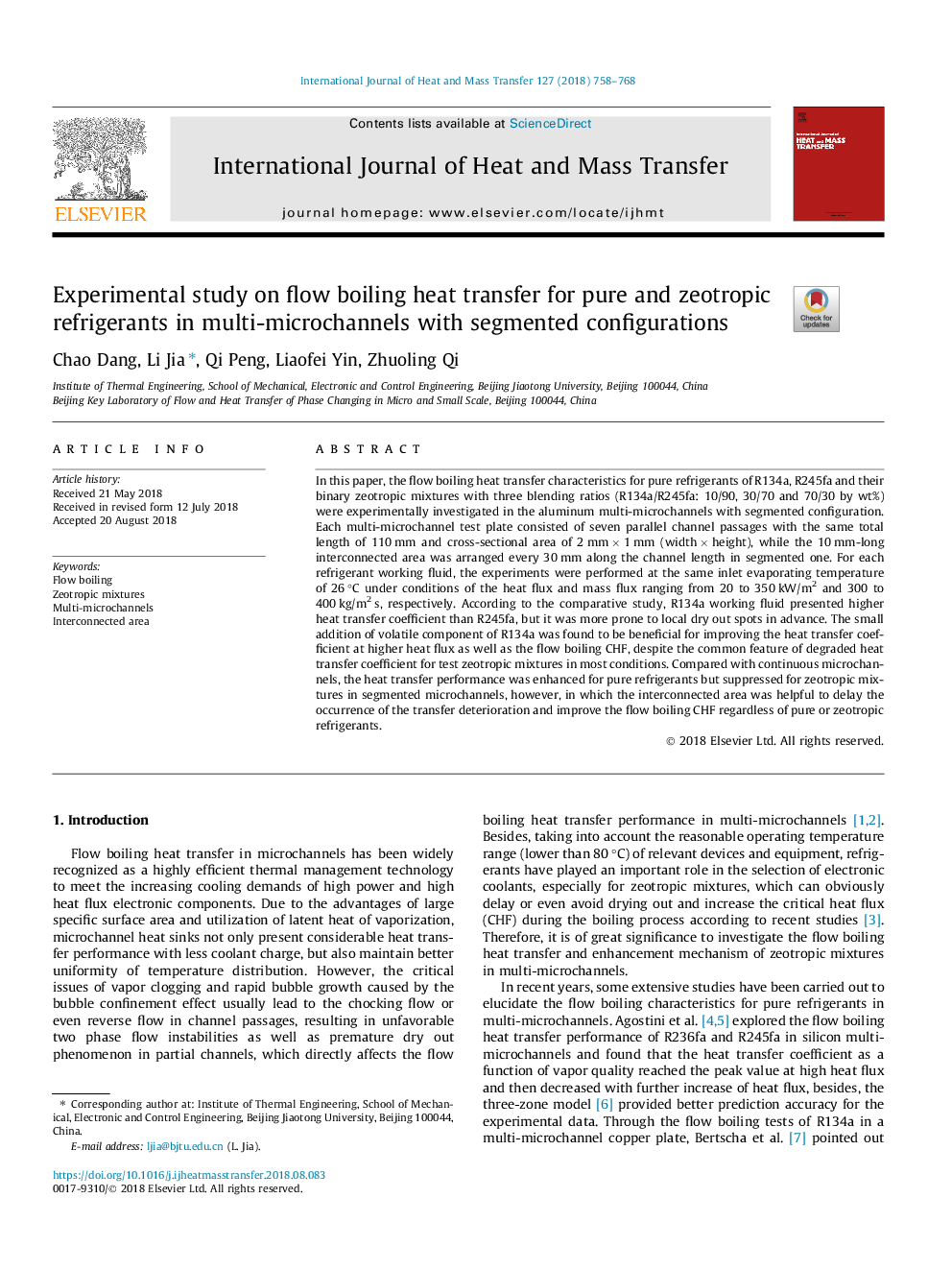| Article ID | Journal | Published Year | Pages | File Type |
|---|---|---|---|---|
| 8942024 | International Journal of Heat and Mass Transfer | 2018 | 11 Pages |
Abstract
In this paper, the flow boiling heat transfer characteristics for pure refrigerants of R134a, R245fa and their binary zeotropic mixtures with three blending ratios (R134a/R245fa: 10/90, 30/70 and 70/30 by wt%) were experimentally investigated in the aluminum multi-microchannels with segmented configuration. Each multi-microchannel test plate consisted of seven parallel channel passages with the same total length of 110â¯mm and cross-sectional area of 2â¯mmâ¯Ãâ¯1â¯mm (widthâ¯Ãâ¯height), while the 10â¯mm-long interconnected area was arranged every 30â¯mm along the channel length in segmented one. For each refrigerant working fluid, the experiments were performed at the same inlet evaporating temperature of 26â¯Â°C under conditions of the heat flux and mass flux ranging from 20 to 350â¯kW/m2 and 300 to 400â¯kg/m2â¯s, respectively. According to the comparative study, R134a working fluid presented higher heat transfer coefficient than R245fa, but it was more prone to local dry out spots in advance. The small addition of volatile component of R134a was found to be beneficial for improving the heat transfer coefficient at higher heat flux as well as the flow boiling CHF, despite the common feature of degraded heat transfer coefficient for test zeotropic mixtures in most conditions. Compared with continuous microchannels, the heat transfer performance was enhanced for pure refrigerants but suppressed for zeotropic mixtures in segmented microchannels, however, in which the interconnected area was helpful to delay the occurrence of the transfer deterioration and improve the flow boiling CHF regardless of pure or zeotropic refrigerants.
Keywords
Related Topics
Physical Sciences and Engineering
Chemical Engineering
Fluid Flow and Transfer Processes
Authors
Chao Dang, Li Jia, Qi Peng, Liaofei Yin, Zhuoling Qi,
